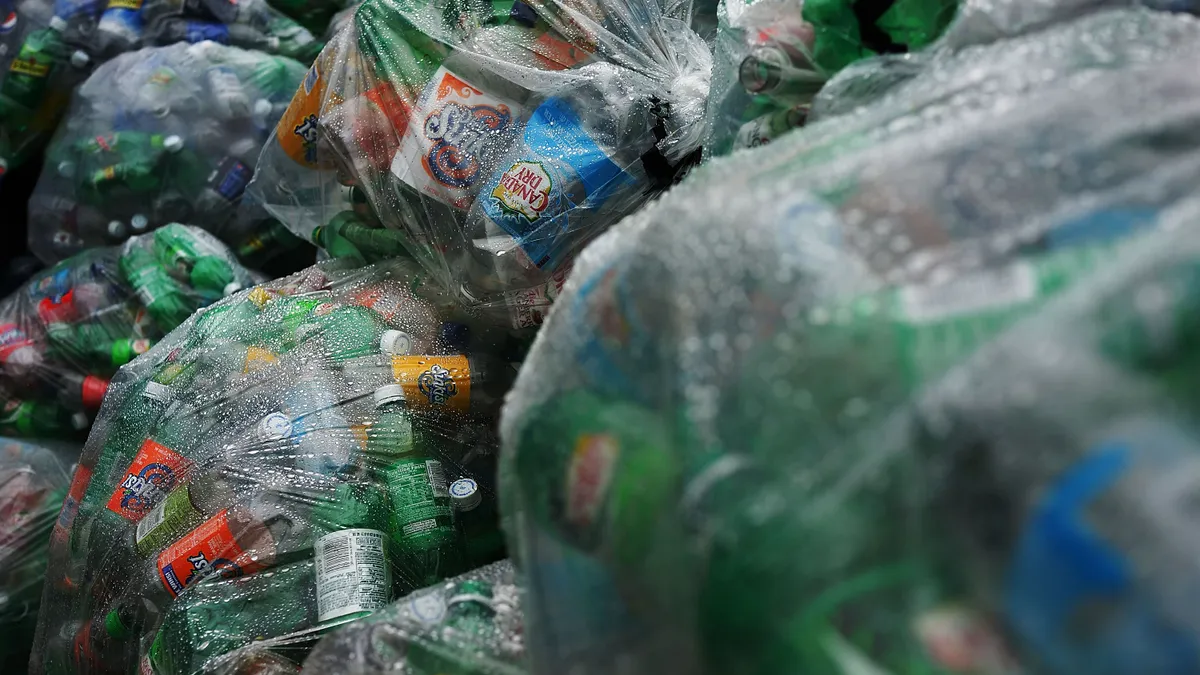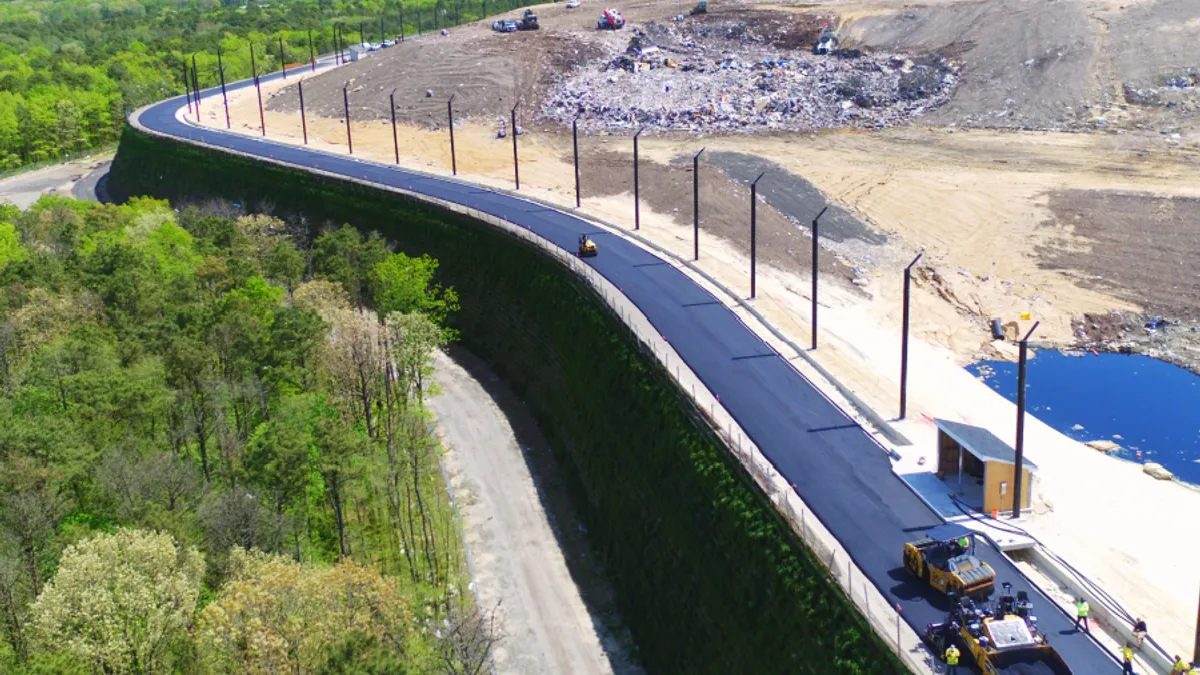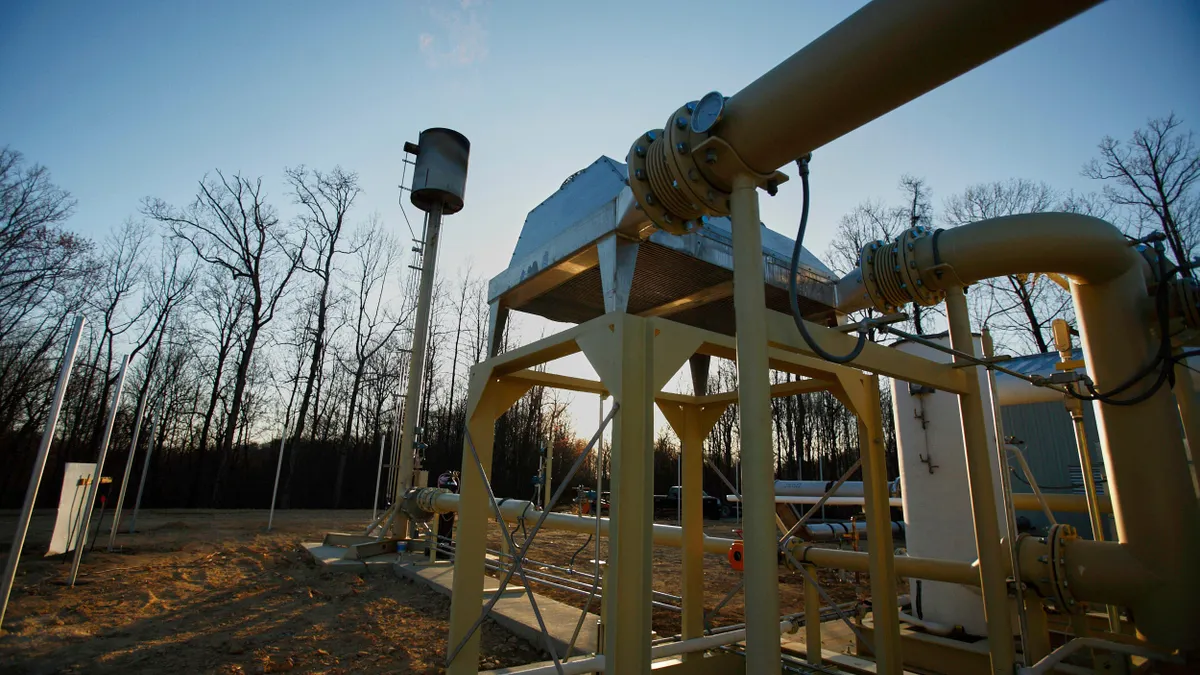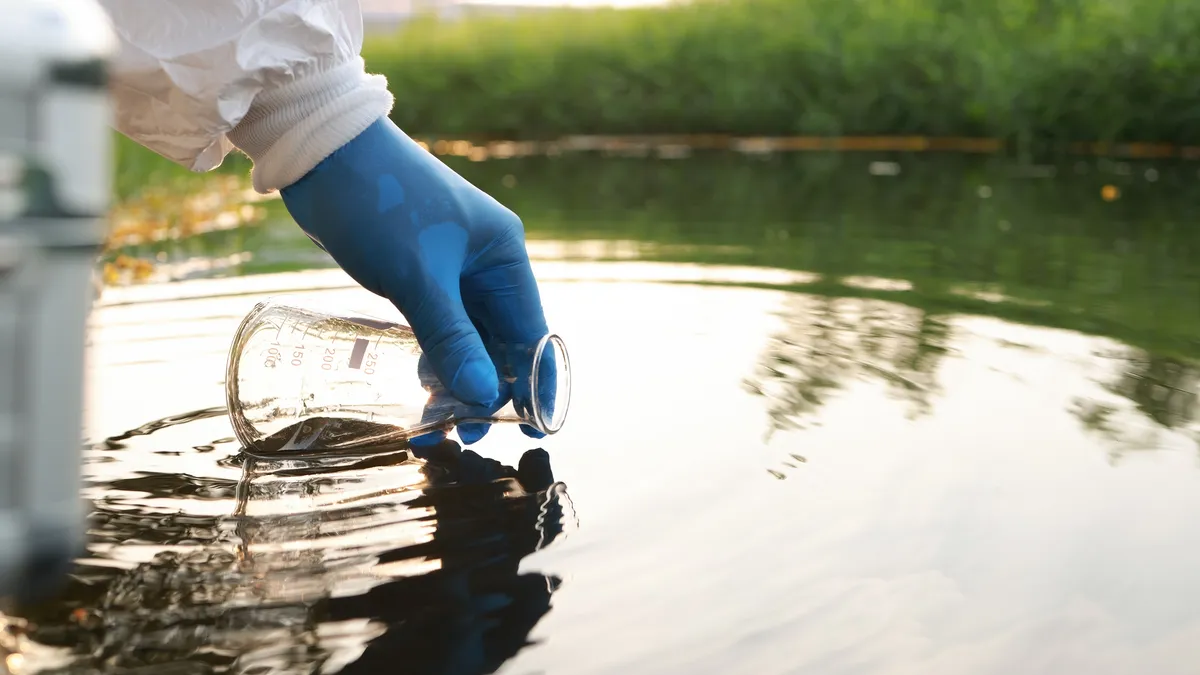Stakeholders across the recycling world agree that major improvements are needed to increase the plastics recycling rate. Speakers at a recent webinar from The Recycling Partnership said one key part of that effort — specific data on what’s being recycled and at what rate — is lacking.
The Wednesday event, part of a series discussing data in the recycling industry, explored how governments, businesses and activists are piecing together available numbers on plastic recycling rates and finding ways to collaborate on better data collection in the future.
“We all need to be exploring the same numbers together and driving towards a solution together,” said Keefe Harrison, CEO and co-founder of The Recycling Partnership.
Conversations on the need for better data have also recently revolved around a new report from Greenpeace that says only about 5% of U.S. plastic was recycled last year. Meanwhile, lawmakers at the federal level are working to pass a bill that would direct the U.S. EPA to more formally collect numerous types of recycling and composting data. Here are some key takeaways from the webinar:
Organizations are puzzling out recycling rates using multiple sources
For high-level data on recycling rates, the most well-known source is probably the EPA’s Fact and Figures report, said Scott Mouw, TRP’s senior director of strategy and research. However, the document was last released in 2020, based on data collected in 2018, and it’s unclear when another update could be coming.
The EPA report is a good source for overall information on recycling progress, but Mouw said the public needs more specific — and much more timely — information in future reports. The recycling rate for plastics was about 8.5% in the last report, “which means there’s certainly lots of room for improvement,” he said.
That number doesn’t give the complete picture of U.S. plastic recycling, however, Mouw said, because the EPA calculates the rate based on three categories of plastics: durable goods, non-durable goods and plastic containers and packaging. Looking closer, there’s a 2.4% recycling rate for non-durable goods currently designed to be thrown away, such as many types of trash bags and plastic cups, he said. There’s a 6.8% recycling rate for durable goods, like carpet and electronics, and a 13.1% rate for plastic containers and packaging, like bottles and jugs.
The Association of Plastic Recyclers’ annual report on plastic recycling and the National Association for PET Container Resources’ annual PET report are two other reliable sources, he said. Those organizations’ most recent reports cover 2020 data.
The U.S. Plastics Pact, a group of more than 100 businesses and organizations that aims to recycle or compost 50% of plastic packaging by 2025, among other goals, uses a combination of these three sources for insight on general recycling rates for different plastic resins. These sources back up the EPA’s estimated 13% recycling rate for containers, he added.
NAPCOR indicates PET bottles and containers have a 23.5% recycling rate, the highest of the plastic resins, while the EPA estimates virtually no plastic plates or cups made from plastics other than PET are being recycled. HDPE bottles and containers have about a 19.1% recycling rate, APR data shows.
New state laws will bring more data and insight
A nationwide push to collect more and better data can help fill in the plastic recycling picture, especially as legislators at the federal and state levels take more interest in plastic recycling policy, Harrison said.
“Data is a powerful source for change. We look at the importance of data as it drives new policy, like producer responsibility policy,” she said. “It also drives decisions at the local community level. There are 9,000 different recycling programs across the U.S., and we want to make sure they have the right data at their fingertips to make the best decision.”
Erin Simon, head of the World Wildlife Fund’s plastic waste and business division, said 2021 and 2022 have been busy years for recycling policy. New extended producer responsibility laws in Colorado and California are examples of legislation that will come with opportunities to collect more data. That could include specifics such as public access to recycling services — a major component of Colorado’s law — and plastic packaging reductions in the case of California’s SB 54.
“SB 54 is the first legislation that will require numeric amounts for source reduction by number and weight by 2032. It's going to serve as a proof point that tracking and data are crucial to the future of circular economy,” Simon said.
Improving public access to recycling will be a key way to raise recycling rates further, said Aaron Burman, TRP’s vice president of data and analytics. “Part of the reason that we see low overall national recycling rates is that only about 60% of people in the country have access to recycling in the same way that they do trash,” he said, meaning they may have some access to recycling locations or services, but those options are less convenient or available than trash resources.
Stakeholder collaboration and transparency can drive better data collection
Another major hurdle is finding ways for stakeholders to collaborate across their groups and share data and methodology, Simon said. “Transparency is going to be absolutely critical in that we can't really have each individual company or country addressing a plastic crisis within a vacuum.”
Many major brands have pledged to reduce plastic waste through 2025 and 2030 goals, but “plastic pollution continues to grow,” she said. “There’s a will, but we don't have that support and scale to drive the meaningful systems change. A fundamental aspect of that is a basic [lack] of harmonized data because we can't monitor progress really effectively.”
The U.S. Plastics Pact is already working on data collection and publishing for the “activators” that are part of the initiative. The WWF also has its own effort, called ReSource Plastic, meant to facilitate conversations among major companies, governments and organizations and collaborate on strategies to reduce plastic waste. Participating stakeholders track metrics and progress in a shared database, and WWF plans to publish a report on progress in December.



















